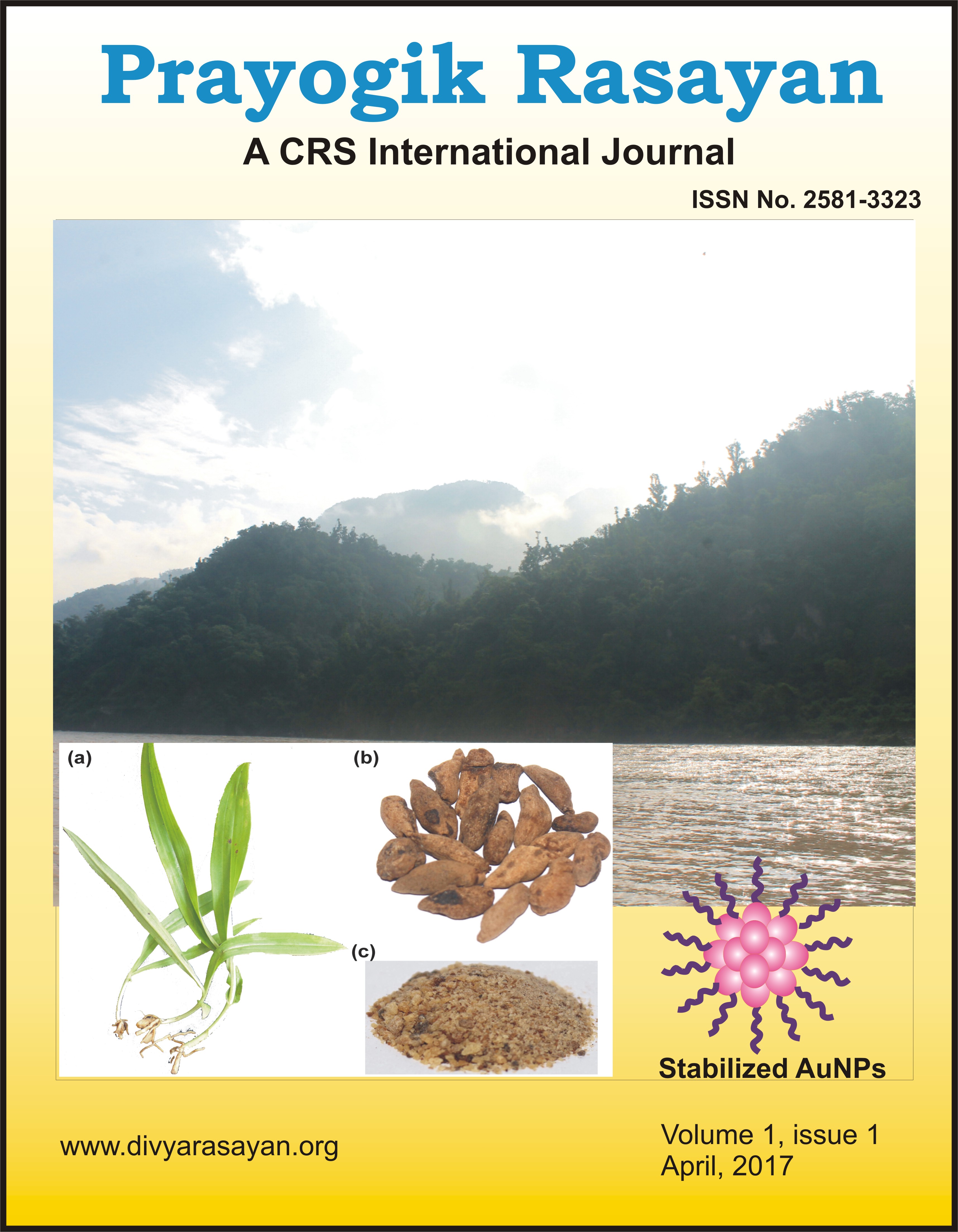


Habenaria edgeworthii (Vrddhi), an important ingredient of Chyawanprash was collected from Himalaya. Antioxidant activity of the tuber extract of Habenaria edgeworthii and its utilization in the green synthesis of gold nanoparticles have been described.

Prayogic Rasayan 2017, 1, 1-9
DOI: https://www.doi.org/10.53023/p.rasayan-201702211
Abstract

Prayogic Rasayan 2017, 1, 10-15
DOI: https://www.doi.org/10.53023/p.rasayan-20170327
Abstract

Prayogic Rasayan 2017, 1, 16-20
DOI: https://www.doi.org/10.53023/p.rasayan-201702212
Abstract
The antioxidant activity of the tuber extract of Habenaria edgeworthii (commonly known as Vrddhi) has been studied against a long lived 2,2-diphenylpicrylhydrazyl (DPPH) radical at room temperature. The tuber extract has been utilized for the synthesis of stable gold nanoparticles at room temperature under very mild conditions. The synthesized gold nanoparticles were characterized by spectroscopic and electron microscopic techniques.

Prayogic Rasayan 2017, 1, 21-28
DOI: https://www.doi.org/10.53023/p.rasayan-20170429
Abstract

Prayogic Rasayan 2017, 1, 29-37
DOI: https://www.doi.org/10.53023/p.rasayan-201704281
Abstract

Prayogic Rasayan 2017, 1, 38-42
DOI: https://www.doi.org/10.53023/p.rasayan-201704282
Abstract